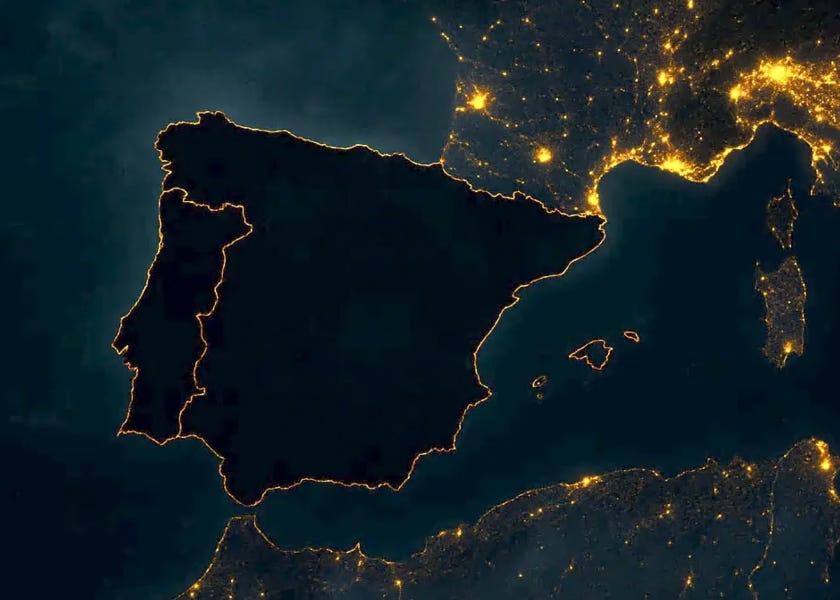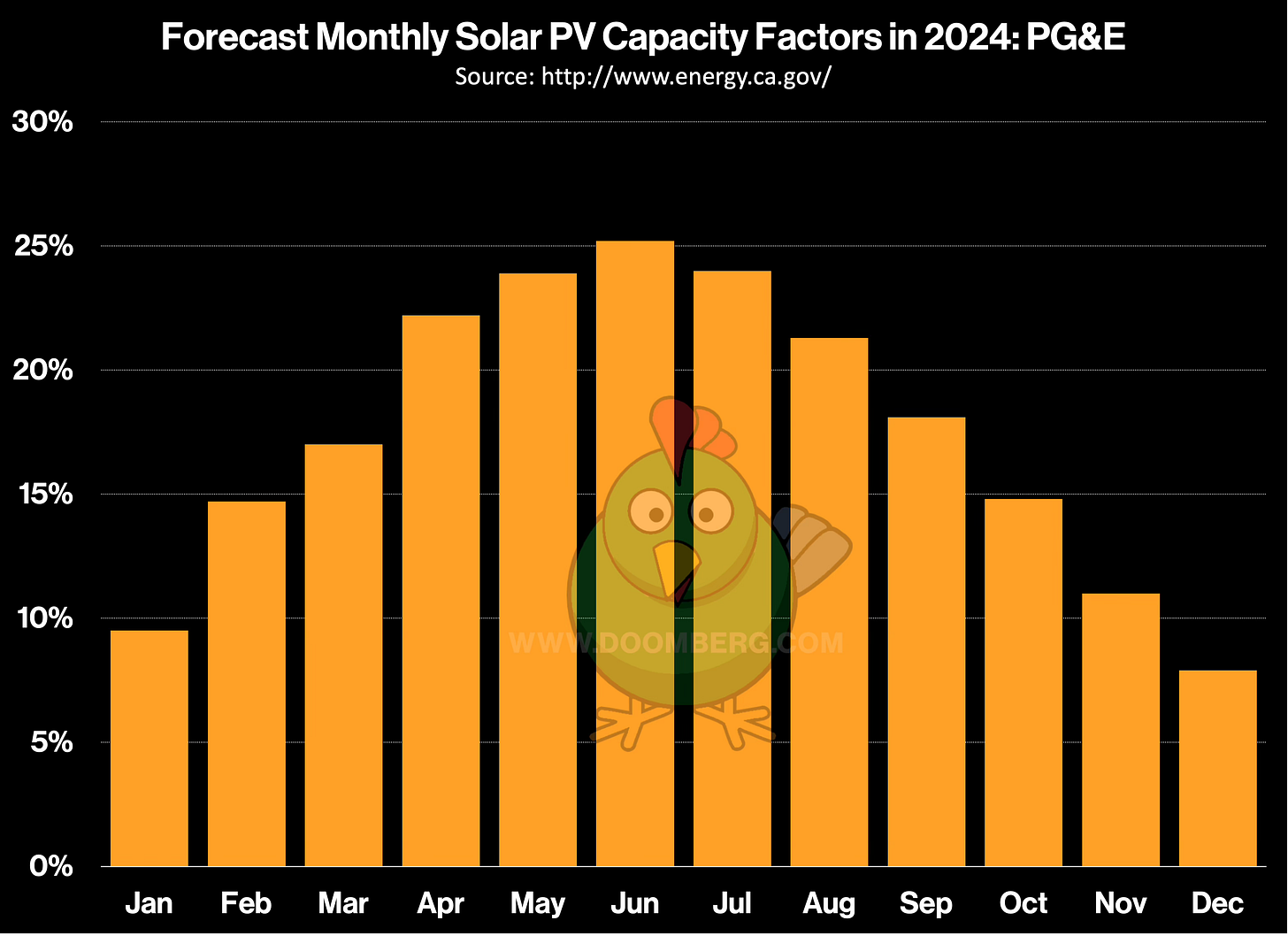Fessing Up
After Spain, the true cost of solar can no longer be hidden from the public.
“The essence of lying is in deception, not in words.” – John Ruskin
On April 28, an unexpected fault occurred at Iberdrola’s Núñez de Balboa photovoltaic (PV) plant in the province of Badajoz, Spain. The resulting surge in voltage spread across a grid that was ill-prepared to absorb it, triggering a cascade of failures and causing a nationwide blackout that extended to all of mainland Portugal. The vulnerability was amplified by the fact that PV accounted for about 60% of total generation just before the event, leaving the grid bereft of the stabilizing inertia and voltage control typically provided by the large spinning turbines of conventional power plants.
Although it was obvious in the hours after the catastrophe what likely transpired, Spanish authorities were quick to accuse those blaming renewable energy of spreading “disinformation.” Spain’s pro-renewables prime minister led the early pushback:
“In a press conference yesterday, Spanish Prime Minister Pedro Sánchez called claims that renewable energy was to blame for the outage ‘lies,’ attacking those who linked the blackout to Spain’s use of wind and solar.
‘Those linking the blackout to the lack of nuclear power are either lying or demonstrating their ignorance,’ he said.
Sánchez announced that the government has set up a commission to investigate the incident and will be examining the role of private energy companies.”
As the results of the investigation became undeniable, responsibility was pinned not on solar but on the grid operators who had failed to make the necessary investments to handle the rapid influx of green electricity.
Last week, an expansive article in Bloomberg Green—confessionally titled “The Fix For Solar Blackouts Is Already Here”—captured this sentiment. It lamented that the penetration of solar and wind has outpaced the buildout of stabilization technologies such as synchronous condensers and grid-forming inverters. In other words, the renewables worked as designed, but the infrastructure to integrate them safely at such high percentages of supply lagged far behind:
“The result is huge spending on new wind and solar capacity, but not enough on grids. The 27 members of the European Union and the UK invest on average $0.7 in grids for every dollar spent on renewables, according to BloombergNEF. Spain ranks the lowest, with only $0.3 spent for every dollar.
Blackouts are causing political backlash against renewables that politicians cannot afford right now. ‘Here’s the problem: Investments in the right infrastructure are not keeping up,’ said António Guterres, head of the United Nations, in a July speech. ‘That ratio should be one to one.’”
Guterres did not realize the seriousness of his admission. The acknowledgment that each new solar plant requires a dollar-for-dollar match in grid investment means the capital needed to actually use solar electricity is at least double what proponents claim. This fact undercuts one of the most persistent myths in energy policy: that because sunshine is free, solar power must necessarily be the cheapest source of electricity.
In reality, while the marginal cost of sunlight is zero, the true system cost of integrating solar into a modern grid includes the heavy and ongoing capital expenditures needed for transmission, stabilization, and balancing services. Without those, the electricity produced cannot be delivered reliably, making it far less “cheap” than advocates claim.
To further prove the point, consider nuclear energy. Here too, the cost of fuel is negligible—uranium fuel rods amount to just a fraction of a penny per kilowatt hour. When done right, the building, operation, and maintenance of a nuclear power plant are certainly cost-competitive. But fuel costs are only one of many parameters that must be weighed when comparing generation sources, and they are often far from the most important.
As if the formidable expenses associated with grid stability weren’t enough to settle the issue, there remains the insurmountable hurdle of intermittency. Consider California, one of the sunniest states in America. Under Governor Gavin Newsom, the state has launched a massive campaign of investment in renewable energy—solar, and grid-scale batteries in particular. However, the following chart makes plain that it will never be enough:
In December and January, California’s PV capacity factors dip below 10%, with extended stretches of minimal solar output. Given the state’s goal of completely purging hydrocarbons from the grid, what exactly is the plan for winter? Install 15-20 times more solar capacity than average daily demand? And how many batteries would be required to bridge a week or two of low production? How will they be recharged?
At least California’s solar capacity factors align with its seasonal electricity demand. In the US Northeast, the region faces two seasonal demand peaks—one during the summer heat and another in the depths of winter. Yet solar capacity factors there regularly dip below 5% for weeks at a time between November and January, leaving grid operators scrambling to cover peak demand.
Despite these obvious and well-known facts, the Northeast has been shutting down thermal and nuclear plants while racing to replace them with solar, wind, and batteries, and it’s going about as well as you’d expect.
Consider New Jersey, where shocking increases in residential power bills have dominated local headlines over the past few weeks. In some cases, bills are tripling, with even more increases on the way. The developing economic and political crisis has already sparked the usual rounds of blamestorming, with renewable energy advocates pointing to rising demand from data centers as the proximate cause.
Not to worry, though. New Jersey’s governor has just the solution:
“Gov. Phil Murphy signed two bills meant to boost renewable energy generation in New Jersey on Friday, as tightening supply and surging demand push electricity prices to record levels with even more hikes on the horizon.
The first bill allows state energy regulators to register an additional 3,000 megawatts of community solar capacity, while the other would create an incentive program to stand up 1,000 megawatts of battery storage by 2030…
Democratic and labor officials praised the expansion of community solar, which allows homeowners and businesses to invest in nearby small-scale solar farms to receive credits on their power bills.”
In the aftermath of Spain’s total grid collapse, and with power crises emerging in virtually every country, state, and region that has gone all-in on the renewables-plus-storage fantasy, it seems only a matter of time before the entire charade collapses under its own weight. Hopefully, the political movement that championed this madness will be swept out of power and consigned to the crowded bin of failed ideas that never should have gained traction in the first place.
“♡ Like” this piece or the sun won’t shine.








I live on the 49N°Latitude in the EU; equivalent to Vancouver. You wouldn't believe the solar-madness here. Installers knocking on doors. From my house I see 4 private-home solar-installations on NORTH FACING roofs!
two immutable universal truths. 1. Government fails. Always. 2. Leftist/democrat/authoritarian politicians are wrong about almost everything. Take out almost.